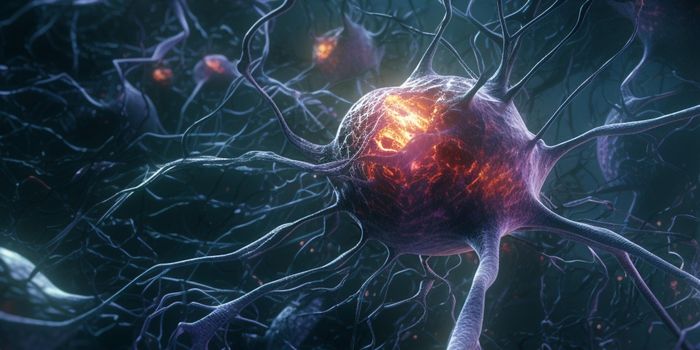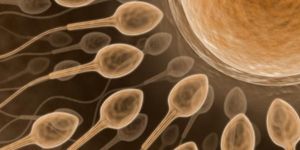Genetics & Genomics
Paternal Sperm May Hold Clues to Autism
APR 15, 2015 9:12 AM PDT
Share
High fidelity: Researcher finds keys to genome integrity
 Maintaining the stability and the correct sequence of our genetic information is vital to the accurate transmission of our genetic code. However, in the course of replicating, our DNA frequently runs into roadblocks, arising from both internal and external sources, that threaten the fidelity of our genetic information. The accurate processing of these roadblocks is paramount to genome integrity. Defects in this process can lead to cancer, genetic problems and premature aging.
Maintaining the stability and the correct sequence of our genetic information is vital to the accurate transmission of our genetic code. However, in the course of replicating, our DNA frequently runs into roadblocks, arising from both internal and external sources, that threaten the fidelity of our genetic information. The accurate processing of these roadblocks is paramount to genome integrity. Defects in this process can lead to cancer, genetic problems and premature aging.In a research paper published in the Journal of Cell Biology, Alessandro Vindigni, Ph.D., professor in the Edward A. Doisy Department of Biochemistry and Molecular Biology at Saint Louis University, shares a discovery that explains how cells use a process called replication fork reversal in order to deal with these roadblocks and transmit accurate genetic data.
Lesions in DNA can occur as often as 100,000 times per cell per day. They can be the result of normal metabolic activities, like free radicals, as well as exposure to environmental factors such as UV radiation, X-rays and chemical compounds.
Improper repair of DNA lesions can lead to mutations, abnormal chromosome structures, or loss of genetic information that in turn can cause premature aging, cancer, and genetic abnormalities.
Depending on the degree of genome instability, these alterations will determine whether a cell survives, goes into a growth-arrest state, or dies.
If the cell's replication machinery collides with the lesion, a strand break can occur.
"If these strands are not repaired properly, the cell may simply die," Vindigni said. "Or, growth may be permanently interrupted.
"Or, a serious lesion may be tolerated and the cell will continue to replicate. This may or may not be a good decision, as this can lead to cancer. It is the degree of genomic instability caused by the lesion that will determine whether the cell will survive."
While these scenarios pose serious threats, our cells have evolved elegant mechanisms to cope, Vindigni says.
DNA replicates by unzipping its two interwoven strands and making copies of each. As the DNA strands separate and copy, they form a "replication fork." Sometimes, these forks run into obstacles - like the lesions described above - that block their progress. When they do, cells often perform a maneuver called fork reversal.
The newly synthesized DNA strands detach from their parental strands and attach to each other. At the same time, the parental strands reconnect, partially zipping up the fork. As a result, the fork transforms into a four-way junction structure, known as a reversed fork.
"Fork reversal is a central mechanism that our replication machinery uses to deal with DNA lesions," Vindigni said. "Once the damage on the DNA is recognized, DNA replication reverses its course by forming reversed forks, the repair is made, and collision with the lesion is prevented."
In this study, Vindigni and team have identified new enzymes that enable cells to resume replication once the DNA lesion has been repaired.
Vindigni found that DNA2, an enzyme that works both as a nuclease (an enzyme that degrades DNA) and a helicase (an enzyme that unwinds double-stranded DNA), plays a key role in allowing reversed forks to restart. Specifically, he found that the nuclease activity of DNA2 is important to degrade the reversed arms of the reversed replication forks and so promote fork restart.
While it is beneficial for healthy cells to fix these DNA roadblocks, researchers considered the flip side of the coin when it comes to cancer cells, which use this same process to survive DNA-damaging chemotherapy.
"Many chemotherapeutic agents act by perturbing DNA replication. They actively create a roadblock ahead of the fork. Several compounds in clinical use are replication inhibitors.
"In this scenario, we would like to prevent fork reversal from working in cancer cells" Vindigni said. "In this case, we want them to collide with the roadblock created by the chemotherapeutic agent."
Vindigni hopes that his discoveries about how repair mechanisms work will teach us how to control these mechanisms. This finding offers new avenues for the development of drugs that block the repair mechanism, which could improve the efficacy of existing chemotherapy drugs.
"It is important to understand how fork reversal and restart works," Vindigni said. "If we can develop inhibitors, we can sensitize cancer cells to chemotherapeutics that are already in use, improving their potency.
"Cancer cells and our healthy cells share the same mechanisms to repair the replication roadblocks, and these inhibitors would prevent fork reversal both in cancer cells and normal cells, causing the replication forks to collide with the roadblocks. However, healthy cells have a way to repair strand breaks arising from these collisions, while cancer cells do not because they often carry mutations in DNA repair genes essential for the repair of these collisions. Thus, the combined treatment with inhibitors of fork reversal and currently used chemotherapeutics could improve the specificity of these drugs toward cancer cells."
In addition to the paper published in the Journal of Cell Biology, the journal also published a discussion that explains Vindigni's work: https://jcb.rupress.org/content/208/5/495.full. The study also was highlighted in Faculty of 1000, a group of over 5000 expert scientists and clinical researchers who review and highlight top biomedical research.
Vindigni's group also contributed to a second paper that was published as back-to-back in the same issue of the Journal of Cell Biology on the role of a key homologous recombination factor in the formation of reversed replication forks.
See: Journal of Cell Biology, www.ncbi.nlm.nih.gov/pubmed/25733713
(Source: phys.org)
Sponsored by

You May Also Like
Loading Comments...








